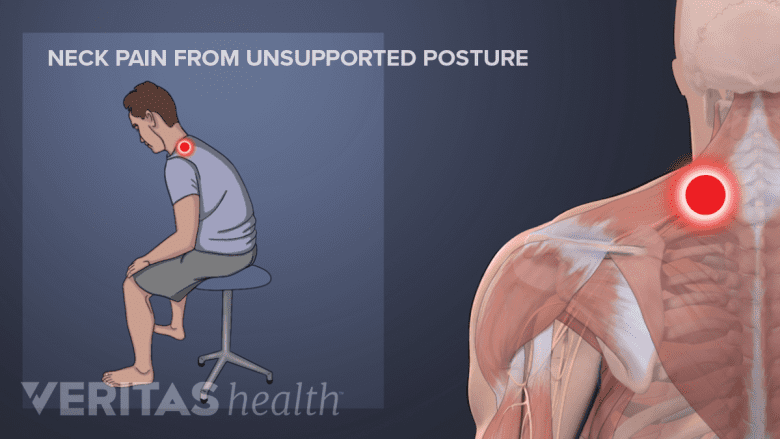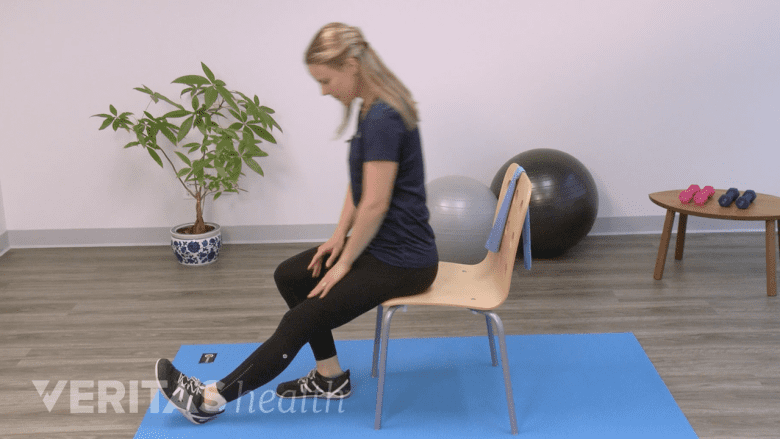If low back or neck pain persists longer than a few days or weeks, a doctor’s evaluation and treatment may be needed.
A general practitioner or chiropractor are often the first line of treatment for back or neck pain. These providers are able to treat or manage most cases of back or neck pain, and may provide referrals to a specialist if needed.
In This Article:
- Preparing to See A Doctor for Back and Neck Pain
- Diagnostic Processes for Neck and Back Pain
When to See a Doctor
Radiating pain, numbness, and tingling in the lower back and legs may require medical attention.
Many cases of low back or neck pain improve relatively quickly on their own. It is generally a good idea to see a doctor if:
- Pain lasts longer than two weeks
Pain is severe and does not respond to initial treatments, such as heat application or over-the-counter medications
- Shooting, sharp pain and/or numbness and tingling is spreading to other areas of the body, such as from the neck to the shoulder or arm, or from the back to the pelvis, groin, or legs
- Low back or neck pain interferes with basic mobility such as turning the head, standing, walking, or other everyday movements so much that daily activities become very difficult
In rare cases, back or neck pain can indicate a medical emergency. If pain includes dizziness or confusion, fever, issues with balance and coordination, or loss of bowel/bladder control, prompt medical attention should be sought.
See When Back Pain May Be a Medical Emergency and What Causes Neck Pain and Dizziness?
Preparing for the Appointment
Identifying postures that worsen pain helps pinpoint the cause of the discomfort.
It can be helpful to have identified general information about pain and other symptoms before the appointment, including aspects such as:
- How the pain feels, including whether the pain is sharp, stabbing, dull, achy, or hot.
- Where the pain is felt, such as whether the pain is only felt in the neck or back, or if pain spreads to other areas, such as the shoulder, arm, pelvis, or legs. Pain distribution might also include whether the pain is focused in one area or if the pain is diffuse.
- How often the pain occurs, including if the pain is constant or intermittent, better or worse with certain postures, and better or worse after activity or exercise.
- When the pain began, such as spontaneously, after waking up one morning, or after an injury.
- Other associated symptoms, such as tingling, numbness, or weakness.
- Attempted treatments and their effectiveness, such as if heat, ice, and/or over-the-counter pain medicine (such as pain relievers or NSAIDs) has helped alleviate pain.
See NSAIDs: Non-Steroidal Anti-Inflammatory Drugs
Preparation before a doctor’s appointment can help with receiving an accurate diagnosis and effective treatment. It is important to describe symptoms in complete but concise phrasing, and answer the doctor’s questions honestly.
After Seeing a Doctor
Stretching exercises promote flexibility, reduce muscle tightness, and aid in healing.
Following an initial doctor’s visit for back or neck pain, it is common to leave with:
- Information and resources on general back pain, or on the suspected cause of symptoms. Information on pain management may be provided, such as over-the-counter pain medicines or heat/ice treatment. Printed pamphlets or information sheets may be provided.
- Instructions for basic stretches for back or neck muscles that can be done at home. Stretches are usually recommended for acute muscle strain.
- Orthotics or supports, such as a cane or walker to assist with daily movements and mobility.
A doctor may also provide a referral to a specialist, such as a physical therapist or spine specialist, who can provide more focused help with diagnosis, pain management, and treatments if necessary.








